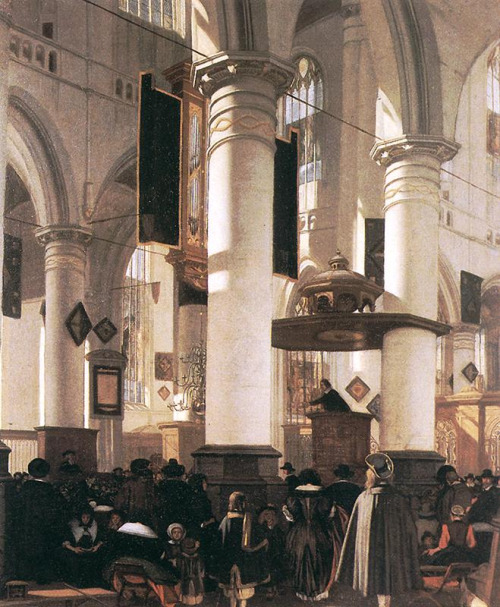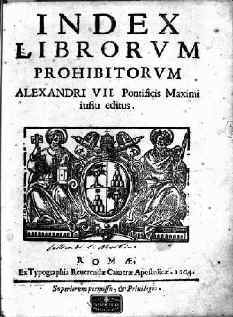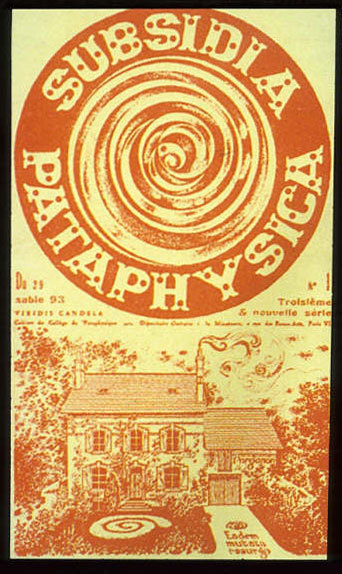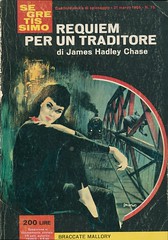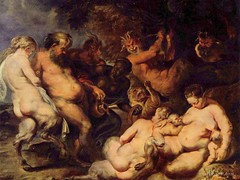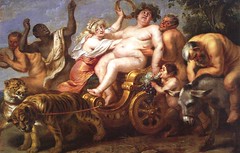Via Bright Stupid Confetti[1] comes Christophe Bruno‘s Dadameter
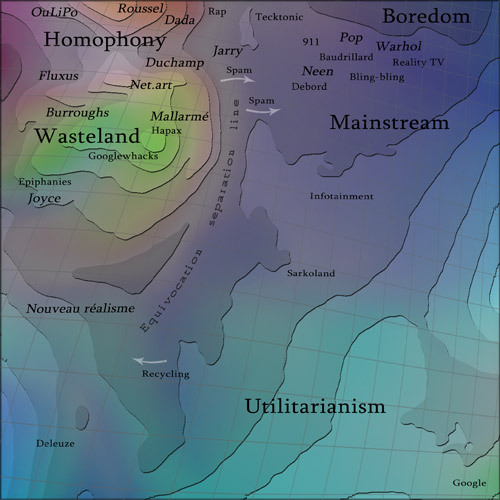
The Dadamap
Christophe Bruno (born July 1, 1964) is a French artist. He began his artistic activity in 2001, influenced by the net.art movement. His thesis is that through the web, and especially through the ability to search and monitor it thoroughly by means of Google, we are heading towards a global text that among other things enables a new form of textual, semantic capitalism, which he explores in his work. His artworks include Iterature, Logo.Hallucination, The Google Adwords Happening and many other pieces.
The Dadameter is an art project by French artist Christophe Bruno first presented in 2008. It was inspired by the work of french writer Raymond Roussel use of homophony described in How I Wrote Certain of My Books.
In the words of the Bruno “the project is a satire about the recent transmutation of language into a global market ruled by Google et al. and uses the most up-to-date technologies of control to draw cartographies of language at large scale.”
It was co-produced by the Rencontres Paris-Berlin-Madrid 2008 for contemporary art and new cinema and programmed by Valeriu Lacatusu.
The result of the project is the so-called Dadamap[2][3] in which each pixel corresponds to one couple of words. The project started from “a lexicon of several thousands of words which correspond to about 800,000 couples (as many pixels then), and we looked for homophonic correlations, as in billard / pillard [see Roussel], or for semantic correlations.”
The procedure provides three measurements for each couple of words corresponding to homophony (the Damerau-Levenshtein distance), Google Similarity (or semantic relatedness) and thirdly equivocation (to which extent a word has a univocal meaning or at the contrary is polysemic or equivocal).
The Dadamap is a topographical map resembling an ocean floor, it features green for wasteland, light blue for utilitarianism, blue for mainstream, deep blue for boredom and brown for homophony[4]. There is an equivocation separation line which roughly splits the map into two, or maybe that is a rift. From left to right, the map contains the following lemmata: OuLiPo, Roussel, Dada, rap, Tecktonik, 911, pop, Warhol, Fluxus, Duchamp, Jarry, Baudrillard, reality TV, spam, neen, bling-bling, net.art, Debord, Burroughs, Mallarmé, spam, Hapax, Googlewhacks, epiphanies, infotainment, Joyce, Nouveau Réalisme, Sarkoland, recycling, Deleuze and Google.

![Jahsonic is the number one Tumblr in Belgium. It took me three days of intensive posting. I met a lot of great people and was literally barraged with good imagery. The quality of images is quite high and no other platform can compare in quantity. Tumblr is a blogging platform that allows users to post text, images, video, links, quotes, and audio to their tumblelog, a micro-blog. Users can “follow” other users and see their posts together on their dashboard. Micro-blogging is a form of multimedia blogging that allows users to send brief text updates or micromedia such as photos or audio clips and publish them, either to be viewed by anyone or by a restricted group which can be chosen by the user. These messages can be submitted by a variety of means, including text messaging, instant messaging, email, digital audio or the web. Leading social networking websites Facebook, MySpace, LinkedIn, and XING also have their own micro-blogging feature, better known as status updates. On May the 3d I compared Tumbr with some other blogging platforms: Last November I introduced At Her Discretion[1], my first exposure to the phenomeneon of micro-blogging. Today I took the Tumblr service for a test drive[2][3] and I was quite pleased with it. Tumblr is a web 2.0 micro-blogging platform that allows users to post text, images, video, links, quotes, and audio to their tumblelog, a short-form blog. Users can “follow” other users and see their posts together on their dashboard. Compared to other web 2.0 social internet services: Compared to Del.icio.us[4]: Tumbler has no social bookmarking. Compared to Facebook[5]: Tumblr is public so it lets you reach a ider audience, but its ease of use is worse that that of Facebook. Compared to Twitter[6]: Tumblr may be a future competitor to Twitter, Twitter does not allow image previews. Compared to WordPress: Tumblr excells at creating little visual interesting posts fast, WordPress is better for the longer more pensive posts. What with the proliferation of these social media and social networking sites, what we need is social network aggregation or lifestreaming.](http://2.media.tumblr.com/Y3KxdEiQupv42yf6Dk0oGeexo1_500.jpg)
